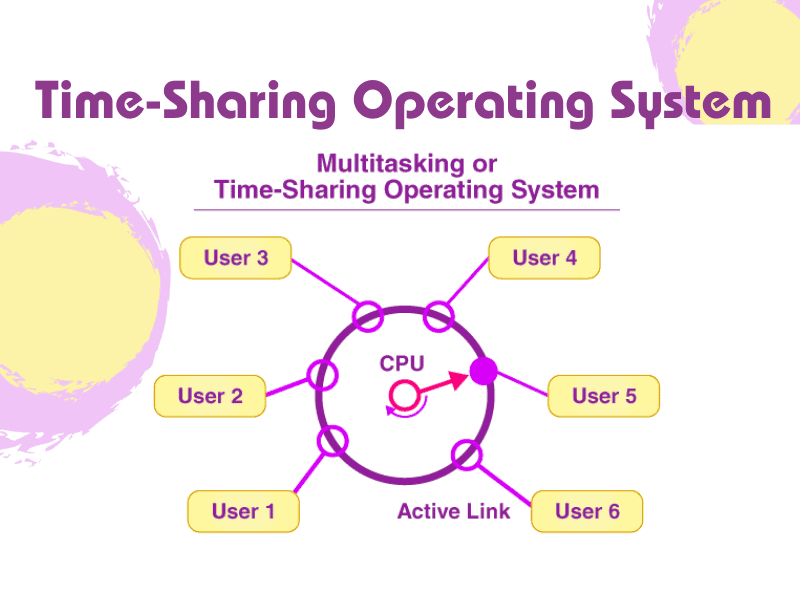Introduction
In the world of operating systems, efficiency is paramount. One of the key players in ensuring this efficiency is the Round Robin (RR) CPU scheduling algorithm. This article delves into the heart of Round Robin CPU Scheduling, providing you with a comprehensive understanding of its principles, advantages, and implementation. Join us on this journey through the world of operating system scheduling and discover how RR scheduling keeps your computer running smoothly.
Understanding Round Robin CPU Scheduling
What is Round Robin (RR) Scheduling?
The round-robin (RR) CPU scheduling algorithm is a preemptive, simple and efficient approach used in operating systems to manage the allocation of CPU time to processes. It’s designed to provide fair access to the CPU for all running processes. Each process is assigned a fixed time quantum, and the CPU switches from one process to another in a circular, or “round-robin,” fashion.
How Does Round Robin Work?
In the Round-Robin scheduling, each process gets a fixed time slice or time quantum. When a process’s time quantum expires, it’s moved to the back of the queue, allowing the next process to run. This cycle continues until all processes have had their turn. The algorithm ensures that no process monopolizes the CPU for an extended period, promoting fairness and preventing starvation.
Round-Robin in Action
Imagine a multi-user system where various tasks need CPU time. Round-Robin ensures that each task gets its share of the CPU, preventing any single task from causing system slowdowns. This mechanism keeps the system responsive and maintains a balance among competing processes.
Advantages of Round Robin Scheduling
Fairness
Round-robin scheduling is inherently fair. It ensures that all processes receive equal CPU time, preventing any single process from hogging resources.
Responsiveness
The algorithm is highly responsive. Even if a process requires a significant amount of CPU time, other processes are not left waiting for extended periods.
Predictable
Round-Robin provides predictable performance. Since each process has a predefined time slice, it’s easier to estimate how long a task will take to complete.
Low Priority Process Handling
Low priority processes aren’t neglected. Round-Robin guarantees that they get their fair share of CPU time alongside higher-priority tasks.
Implementing Round-Robin in Operating Systems
Setting the Time Quantum
One of the critical aspects of implementing Round-Robin scheduling is choosing the time quantum. The time quantum should strike a balance between fairness and system responsiveness. A shorter time quantum provides more fairness but can increase context-switching overhead, while a longer time quantum might lead to decreased responsiveness.
Data Structures
To maintain the queue of processes waiting to run, the operating system employs data structures like linked lists or arrays. These data structures efficiently manage the order of process execution.
Context Switching
Context switching is the process of saving the state of the currently running process and loading the state of the next process in the queue. It’s a fundamental component of Round-Robin scheduling, ensuring smooth transitions between processes.
FAQs
How is Round Robin different from other scheduling algorithms?
Round-robin scheduling differs from other algorithms like First-Come-First-Served (FCFS) and Priority Scheduling by providing fairness and responsiveness. While FCFS may lead to a process monopolizing the CPU, Round-Robin prevents such scenarios.
What is the main challenge with Round-Robin scheduling?
The main challenge with Round-Robin is selecting the appropriate time quantum. If the quantum is too short, context switching overhead can become significant. If it’s too long, responsiveness may suffer.
Does Round-Robin work for real-time systems?
Round-Robin is not the ideal choice for real-time systems as it doesn’t guarantee strict deadlines. Real-time systems often require precise timing, which Round-Robin may not provide.
Can Round-Robin scheduling be combined with other algorithms?
Yes, it can. Hybrid scheduling algorithms, such as Multilevel Queue scheduling, combine round-robin with other approaches to cater to different types of processes.
How does Round Robin handle process priorities?
Round-Robin treats all processes with equal priority. If priority-based scheduling is needed, other algorithms like Priority Scheduling should be considered.
Is Round Robin suitable for all types of systems?
Round-Robin is well-suited for time-sharing systems and situations where fairness and responsiveness are crucial. However, it may not be the best choice for all scenarios.
Conclusion
In the realm of operating systems, the round-robin (RR) CPU scheduling algorithm is a crucial tool for ensuring fairness, responsiveness, and efficiency. Its unique approach to time-sharing and process allocation makes it an invaluable component of modern computing. As you’ve learned from this article, understanding the Round Robin scheduling algorithm is essential for anyone interested in system performance and efficiency.



0 Comments